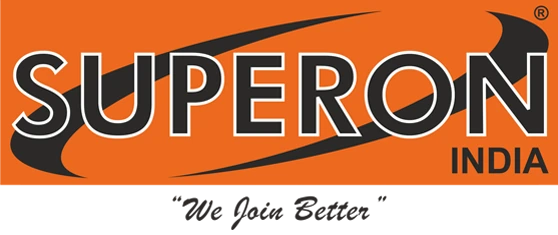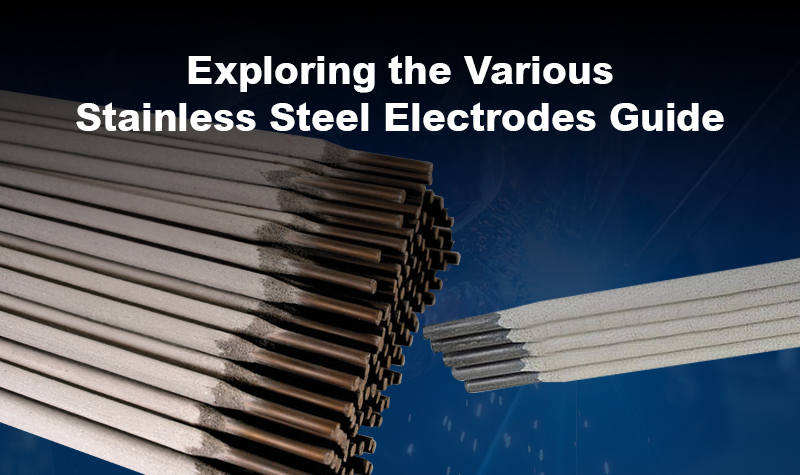Stainless steel welding is very important to the industries of petrochemicals, power generation, shipbuilding, and construction and is a process the success of which is heavily dependent on the correct choice of stainless steel electrodes. This guide discusses the different types of stainless steel electrodes and the following properties of each type produced by the leading manufacturer Superon Technik, which are widely used and known for their high quality.
Types of Stainless Steel Electrodes at Superon Technik
Superon Technik offers a diverse range of stainless steel electrodes, each tailored for specific applications and material compatibilities. Below is an overview of some of their key products:
1. SUPER OPTIMAL 307-15
SUPER OPTIMAL 307-15 electrode is designed for welding dissimilar metals. It not only has good crack resistance but also a high tensile strength. This is the best option for joining stainless steel to mild steel or other alloys, hence, welding that is dependable and that would last longer.
2. SUPER OPTIMAL 308L-15
This low-carbon electrode is the most suitable to weld 18Cr-8Ni austenitic stainless steels, such as 304 and 304L grades. The carbon content of this electrode is decreased which leads to minimizing carbide precipitation thus the material will be protected from intergranular corrosion.
3. SUPER OPTIMAL 309L-15
The SUPER OPTIMAL 309L-15 electrode was specifically developed for welding similar and dissimilar materials, more particularly joining stainless steel to carbon steel. The considerably low levels of carbon in the material are key to obtaining welds that are resistant to carbide precipitation, hence, strong and corrosion-free ones.
4. SUPER OPTIMAL 310
Engineered with high-temperature applications in mind, this electrode meets the demands of welding of heat-resistant stainless steels with 25% Cr and 20% Ni. The particular characteristic of this electrode is that it has got magnificent mechanical properties that are terrific at elevated temperatures and which it doesn’t lose while being oxidized.
5. SUPER OPTIMAL 312
The SUPER OPTIMAL 312 electrode is truly a great product, as it can take care of both heavy and light repairs whenever you need it. It is a good selling point to produce thin and precise welds thanks to its remarkable performance of this electrode in undercutting.
6. SUPER OPTIMAL 316L-15
This electrode is exclusively designed to conform with molybdenum-bearing austenitic stainless steels including 316 and 316L. Moreover, it is superior in terms of resistance to pitting and crevice corrosion in chloride conditions.
7. SUPER OPTIMAL 317L
A unique quality of SUPER OPTIMAL 317L electrode is the reduced carbon content in the one which is effective and is the cause of the electrode becoming good resistance to chemical corrosion when welding 317 and 317L stainless steels, especially in an acidic environment. Low carbon content of this electrode can aid in minimizing the risk that the carbides will precipitate.
8. SUPER OPTIMAL 318
High strength niobium is combined with the SUPER OPTIMAL 318 electrode. This kind of Ti-based filler metal serves to prevent the intergranular corrosion problem. Without any doubt, the welds produced by this method keep the mechanical properties intact.
9. SUPER OPTIMAL 347-15
The Super Optimal 347-15 electrode was specifically created for welding stabilized stainless steels like 555 and 321 has great anti-intergranular corrosion properties because of the existence of niobium, a metal held in the weld zone thus avoiding carbide precipitation.
10. SUPER OPTIMAL 385
The SUPER OPTIMAL 385 electrode is a highly alloyed type and is used for welding 904L containing a high amount of Ni, Mo, and Cr which makes it available in corrosive service. The SUPER OPTIMAL 385 electrode (904L) has excellent corrosion resistance to sulfuric acid and phosphoric acid.
11. SUPER OPTIMAL 2209-15
A balanced microstructure of ferrite (This group includes the more common types 405, 409, 430, 442 and 446) and austenite (This group includes types 302, 304, 310, 316, 321 and 347) is obtained in the electrode and as a result its strength increases and it acquires greater resistance to stress corrosion cracking. It allows the gas metal arc welding of grades like 2205 using direct current solid wire electrode technique.
12. SUPER OPTIMAL 2594-15
The SUPER OPTIMAL 2594-15 electrode is a low impure material with both high tensile strength and good corrosion resistance to pit and crevice corrosion. It is commonly used in the chemical, petrochemical and desalination industries.
13. SUPER OPTIMAL 410-15
Heavy coated low hydrogen MMA electrodes suitable for the welding of 11 – 13.5% Cr Steels (AISI 410) Ferritic Martensitic Chrome Steels. These steels are air hardening and therefore preheating and stress relieving treatments are required to obtain a suitable ductility to allow mechanical working.
14. SUPER OPTIMAL 430-15
The SUPER OPTIMAL 430-15 electrode, a welding product for ferritic stainless steels, meanwhile, is designed so that the alloy forms a good vapor-shielded oxidation layer that serves to minimize the effect of air humidity on its welding capacity. Air humidity can cause loss of nitrogen from the surface of the weld where nitrogen is one of the gases most useful in keeping fusion interactions stable.
15. SUPER OPTIMAL 316L
Austenitic steel of the deposited metal with 5-9% ferrite is produced by low carbon rutile-based Mo- containing electrode SUPER OPTIMAL 316L. An electrode with proper coating and low moisture uptake was used. Fusion was made low soft with few spatters and very easy slag removal. Exceptional good bead appearance and easy restriking is also an advantage of the electrode.
Conclusion
Choosing an appropriate stainless steel electrode will make the welding process good. They are the ones that are strong, corrosion-resistant, and durable. Super OPTIMAL is a range of high-grade products of Superon Technik (e.g., 308L-15, 309L-15, and 316L-15) that, in addition to corrosion protection, are versatile for petrochemicals, shipbuilding, and power generation. They are the ones who attend to innovative and international standards making them the most reliable provider of welding solutions for multiple applications. Their vast range of products, including electrodes from the general fabrication line or those designed for high-temperature environments as less wear and tear, as well as increased efficiency and productivity, are some of their other features.
Also Read: Navigating Welding Electrodes: A Concise Overview

